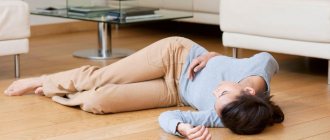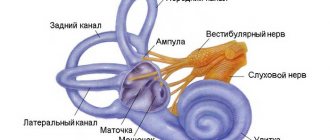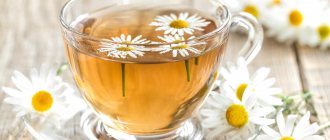Svetlana Shcherbakova
Cardiologist
Higher education:
Cardiologist
Kabardino-Balkarian State University named after. HM. Berbekova, Faculty of Medicine (KBSU) Level of education – Specialist 1994-2000
Additional education:
“Cardiology”
State Educational Institution “Institute for Advanced Training of Physicians” of the Ministry of Health and Social Development of Chuvashia
Contacts
Vegetative-vascular dystonia is a special condition in which such manifestations as disturbances in the functioning of various internal organs and their systems, deterioration in circulatory and respiratory processes, and regulation of human nervous activity are noted. And exercises for VSD, which are usually prescribed by a doctor when drawing up a treatment regimen for a patient, are determined by the patient’s condition, his well-being and the data obtained from the tests. Many doctors do not classify vegetative-vascular dystonia as an independent disease, but rather a combination of certain manifestations and symptoms. Therefore, changes in lifestyle, nutrition and physical activity are mandatory points for the recovery of a person who has been diagnosed with vegetative-vascular dystonia.
The appointment of physical therapy, including massage for VSD, in this pathological condition can be considered a prerequisite for the speedy stabilization of the patient’s well-being. After all, it is thanks to a well-designed load, a choice of exercises aimed at improving all processes in the body, that positive dynamics are achieved in the treatment of VSD. Therapeutic exercises for VSD are prescribed in combination with drug treatment, when the patient’s body is ready to receive more active methods of therapeutic influence and stimulation of the work of all systems and internal organs.
Respiratory exercise for VSD
What is breathing?
Breathing is a cyclical process that involves more than just the lungs. When inhaling and exhaling, the diaphragm, intercostal, pectoral, and abdominal muscles also work.
Let's imagine how the cycle begins with inhalation: expansion of the lungs, followed by filling of the chest, then the stomach, the anterior abdominal wall protrudes forward. Inhalation is followed by exhalation, during which the whole process occurs in the same sequence in reverse - only the air leaves the lungs.
Each new respiratory cycle provides the body with a new influx of oxygen. However, in addition to oxygen, the body always contains some amount of carbon dioxide. The proportions between the amounts of these substances directly affect the state of the body.
Reference. The ideal ratio of oxygen and carbon dioxide for the body is 1: 3.5.
How to breathe correctly?
If your health worsens, as well as anxiety or stress, you need to pay attention to the way you breathe. It is very likely that breathing has become frequent, shallow, and intermittent. In this case, the balance of oxygen and carbon dioxide undergoes changes. The first thing to do is take a few deep breaths. If you breathe quickly and deeply, hold your breath for a second or two. During this time it is impossible to suffocate. Then slowly inhale the air and exhale gradually.
It is recommended to try to breathe through your nose. Passing through the nasal passages, the inhaled air is moistened and warmed. Breathing through your mouth is more natural during increased physical activity - for example, while running.
Breathing changes as your body position changes. For example, when we lift a heavy object, we usually do it while inhaling. We inhale air when we stand up or stretch our whole body. If, on the contrary, you sit down or lie down, you exhale.
If, with insufficient inhalation, the body does not receive enough oxygen, the head becomes “heavy”, it is difficult to concentrate, the consciousness is slightly confused, and a feeling of lack of air is created. But if you don’t exhale enough, if you breathe deeply and quickly, the effect of hyperventilation occurs. The level of carbon dioxide in the blood drops, which leads to vasoconstriction. Moreover, the blood vessels of the brain are the first to narrow. The body reacts to this with slight dizziness, and tingling pain in the heart area is possible. Several short, shallow inhalations and exhalations that stabilize the ratio of oxygen and carbon dioxide in your blood help correct the situation.
Pranayama technique
The principle of deep slow breathing is widely used in yoga, where there is a special breathing technique - Pranayama. It is performed before starting a set of asanas, usually in combination with meditation. Pranayama literally translates as energetic breathing. Yogis believe that the air contains not only oxygen, but also vital energy - prana, which is inhaled to increase energy levels.
A distinctive feature of Pranayama is a slow, conscious inhalation, during which the chest, upper part of the lungs, diaphragm, and abdomen are filled with air, and then a delay and slow exhalation. To perform this technique, you need to sit cross-legged or take the well-known lotus position with your back straight.
Breathing exercises
Various exercises related to breathing existed in the Ancient East, for example, in China and India. They were often associated with religious tradition, combined with prayers, hymn singing, meditation, and contemplative reflection. For example, one of the Chinese teachings recommended that before starting a new task, take at least 300 smooth inhalations and exhalations, and then begin active action. These elements have come down to our time in the form of yoga, which contains exercises (asanas), breathing exercises, and internal concentration (meditation).
Basic principles of breathing exercises
Pay attention to how you exhale. The exhalation must be complete. The more fully you exhale, the deeper the inhalation will be. If any unpleasant sensations appear, you need to pause to monitor your well-being. If it gets worse, classes should be rescheduled for another time, if it’s normal, move on to the next exercise.
Below are some exercises. They are repeated 1-2 times a day, 10-15 times, and are performed in different positions: standing, sitting, lying down.
"Nose, belly and chest"
Part 1: breathe through your nose. Breathe in and out calmly. Then inhale air first through one nostril and then through the other. Try doing 1-2 cycles, inhaling in bursts and exhaling rhythmically through your nose and then through your mouth.
Part 2: breathing with your stomach. Inhaling through the nose, we leave the chest motionless, protruding the stomach and drawing it in as we exhale. Exhaling through your mouth is a very calming exercise.
Part 3: breathing through the chest. We inhale through our nose, expanding our chest as much as possible, and then exhale as much as possible. Imagine your lungs, from which the air is completely expelled. Leave your stomach motionless!
"The Scent of a Flower"
Imagine that in front of you is a beautiful, fragrant flower. Smell it! To do this, you need to sniff air through your nose. Now repeat this several times, but a little faster. If you want to exhale, do not interfere with the body. Practice doing this exercise for 3 minutes (but not necessarily from the very first lesson). Concentrate on the tip of your nose and try to feel the pulsation in your abdomen.
"Singing sounds"
For hypertensive type of VSD, this exercise is especially useful. Inhale as deeply as possible through your nose and exhale with the same long exhalation, slowly pronouncing the sounds “a”, “i”, “o”, “m” or “sh” each time. Repeat several times for 5-10 minutes.
It has been scientifically proven that pronouncing these sounds has a beneficial effect on the body. For example, singing the sound “a” improves blood circulation in the arms and legs, and the sound “i” improves brain function. The humming exhalation of the sound “o” activates cardiac activity. The tight pronunciation of the sounds “sh” and “m” makes the body more resistant to diseases. (Yoga connoisseurs will probably remember the mantra with the chanting of the word “om”; as we see, this Indian tradition did not develop by chance).
"Steps"
This exercise, on the contrary, is best suited for those suffering from the hypotonic type of VSD.
Stand or sit. Exhale completely. Then take a gradual inhalation: inhale a little - hold your breath, inhale a little again - hold your breath again. And so on five times. When your lungs are full, exhale all the air “step by step”. Inhalation, pause, exhalation should be the same in time (start with 2-3 seconds). Repeat this at least 10 times.
Basic rules and principles
For gymnastics to have a positive impact, it must be done correctly:
- Breathe through your nose. This way the air is heated, humidified and purified. If oxygen enters through the mouth, harmful elements and dust enter the lungs.
- Take full breaths. The process involves: the chest, diaphragm and muscles of the anterior abdominal wall.
- Inhale and exhale correctly. Gymnastics for VSD involves inhaling, during which the chest first expands, and then the abdominal muscles. During exhalation, the stomach first contracts, and then the chest narrows.
- Synchronize movements and breathing. As you inhale, your arms spread to the sides or rise. Exhalation is accompanied by squatting, bending or bringing your arms together.
- Complement breathing exercises with sports. Yoga, aerial yoga, Pilates and exercise therapy for VSD help relieve spasm of the spinal muscles, thereby having a beneficial effect on the supply of oxygen.
There is a test before the start of classes. Most people have frequent breathing with VSD. It is necessary to measure the number of breaths per minute at rest. After a month of classes, the test is repeated. If breathing has become less frequent, this indicates positive dynamics.
Doctors recommend breathing exercises for problems such as:
Good results only appear if you practice regularly.
How does the body perceive exercise?
Our body enjoys movement - unless, of course, it is excessive load. Breathing becomes deeper and more rhythmic, blood flow increases. This means that all our tissues and organs receive more oxygen and nutrients. The functioning of all organs and systems of the body, including the respiratory system, improves.
Even the character of a person who exercises regularly changes. He becomes more strong-willed, persistent, and self-confident. Agree, without all these qualities, any athlete would hardly continue training after several days of enthusiasm.
But even more interesting are the changes taking place in worldview. Together with the will to live, such a person develops internal balance. And this is the key to calmly perceiving any problems, and then solving them constructively.
Types of dystonia
There are systemic and regional types of VSD. With the systemic type, the patient suffers from regular increases or decreases in blood pressure. Regional dystonia is characterized by a mixed type, discoodinated reactions in different vascular areas. In this case, the central nervous system and the periphery of the nervous system suffer.
Doctors say that one of the reasons for the appearance of dystonia is physical inactivity. The modern way of life makes it possible not to make great physical efforts to get food or protect the family. A person can spend the entire working day in an unchanged sitting position, and while away the evening in front of the TV. We are paying for this with the emergence of such diseases. Pathology does not appear immediately; it becomes a natural result of an incorrectly chosen way of life.
Gymnastics at home
Some patients suffering from vegetative-vascular dystonia develop self-doubt and apathy, which in turn cause a reluctance to leave home to exercise in the fresh air or in the gym. A good solution is home gymnastics. No one will bother you to do exercises in the morning or warm up during the day at home. Make physical activity a habit. This is a very healthy habit that you will want to develop. Then you can safely go for a run, go to a special exercise therapy group, or find yourself a gym with a trainer who will individually select a set of exercises for you. You just need to distinguish between sports and exercise therapy - consult a professional, these are different concepts.
The load needs to be increased gradually, exercised regularly, and it is best to combine exercises with massage, water procedures, and breathing exercises.
The effect of swimming on the treatment of VSD
Is it possible to play sports with VSD? It is possible and necessary, if you choose the right way and how.
Swimming is one of the sports recommended for vegetative-vascular dystonia. In addition to a special breathing technique, swimming is characterized by the involvement of many types of muscles and contact with the aquatic environment. This is an excellent hardening, restorative procedure. Any type of swimming is suitable. This sport carries a lot of positive emotions. Even contemplation of the water surface or waves has a good effect on the nervous system, evoking pleasant memories of the picturesque landscapes on the coast. Yoga, jogging, walking, cycling, aerobics (as well as fitness, Pilates) are also useful. You should not engage in weightlifting or other strength exercises, especially if the sport involves sudden body movements.
The main principle of playing sports with VSD is a moderate load, and also, as with any training in general, its gradual increase.
Contraindications
Contraindications to exercise therapy for VSD are identified by a doctor. General recommendations are to avoid overexertion and stop exercise if pain occurs.
Contraindications to aerobic exercise:
- cardiovascular diseases (severe hypertension, arrhythmia, ischemic heart disease, stroke/myocardial infarction);
- heart defects;
- pulmonary failure;
- possible risk of retinal detachment;
- pathologies of the musculoskeletal system;
- fever;
- serious mental illness with loss of self-control.
Exacerbation of any chronic diseases is also a contraindication to physical exercise.












